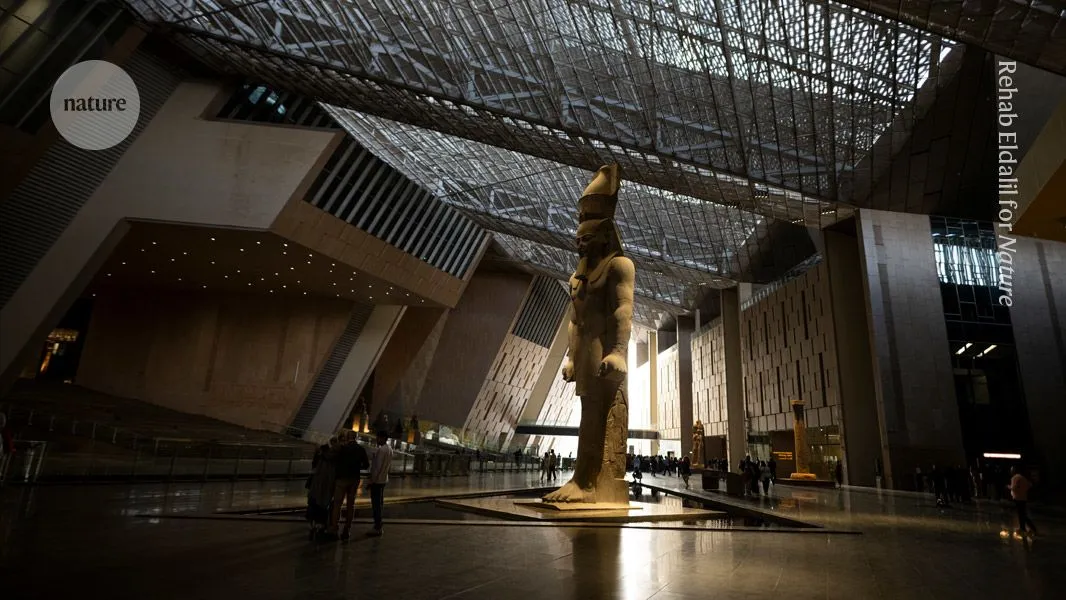For 100 years, Egypt’s scientists have watched as their nation’s story was largely told by institutions from Europe and the United States.
Can a stunning new museum change that narrative?
Two kilometres north of the Pyramids of Giza, around 20 minutes’ drive from the centre of Cairo, is a sprawling complex that opens a gateway to the past. When it opens fully, the Grand Egyptian Museum will be the world’s largest such facility devoted to a single civilization. The site occupies 500,000 square metres, or the size of about 80 football fields. A new airport, Sphinx International, has been built to serve those visiting the pyramids and the museum. A small section of the museum is open, and the whole facility is due to be inaugurated later this year.
Visitors are greeted by a colossal statue of Ramses II, the third pharaoh of the nineteenth dynasty, who ruled Egypt for nearly seven decades. Twice a year, the Sun’s rays beam down onto the face of this 3,200-year-old statue in the museum’s lobby. This effect is intended to mirror a solar alignment phenomenon on another Ramses II statue, at the Abu Simbel temple in Nubia, southwest of Aswan, where sunlight falls on the face of the statue on the king’s birthday and on coronation day.


